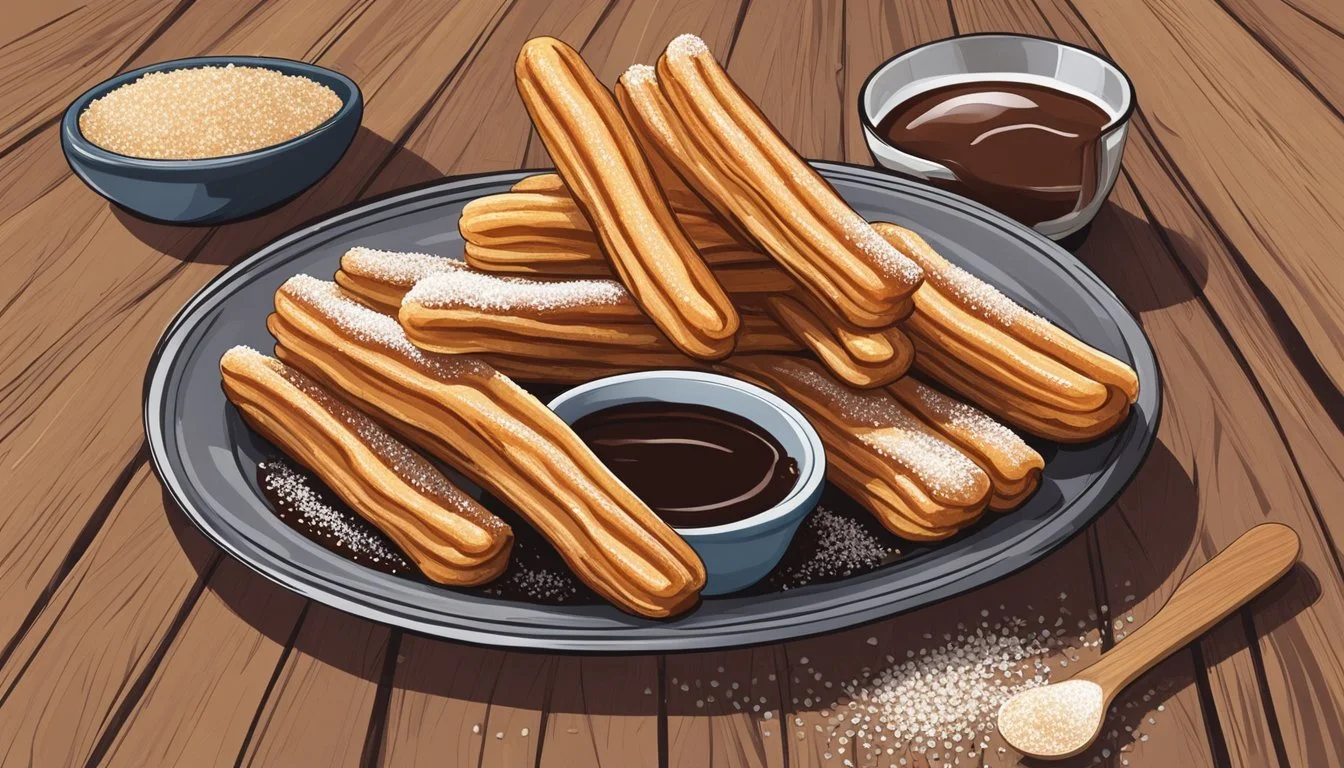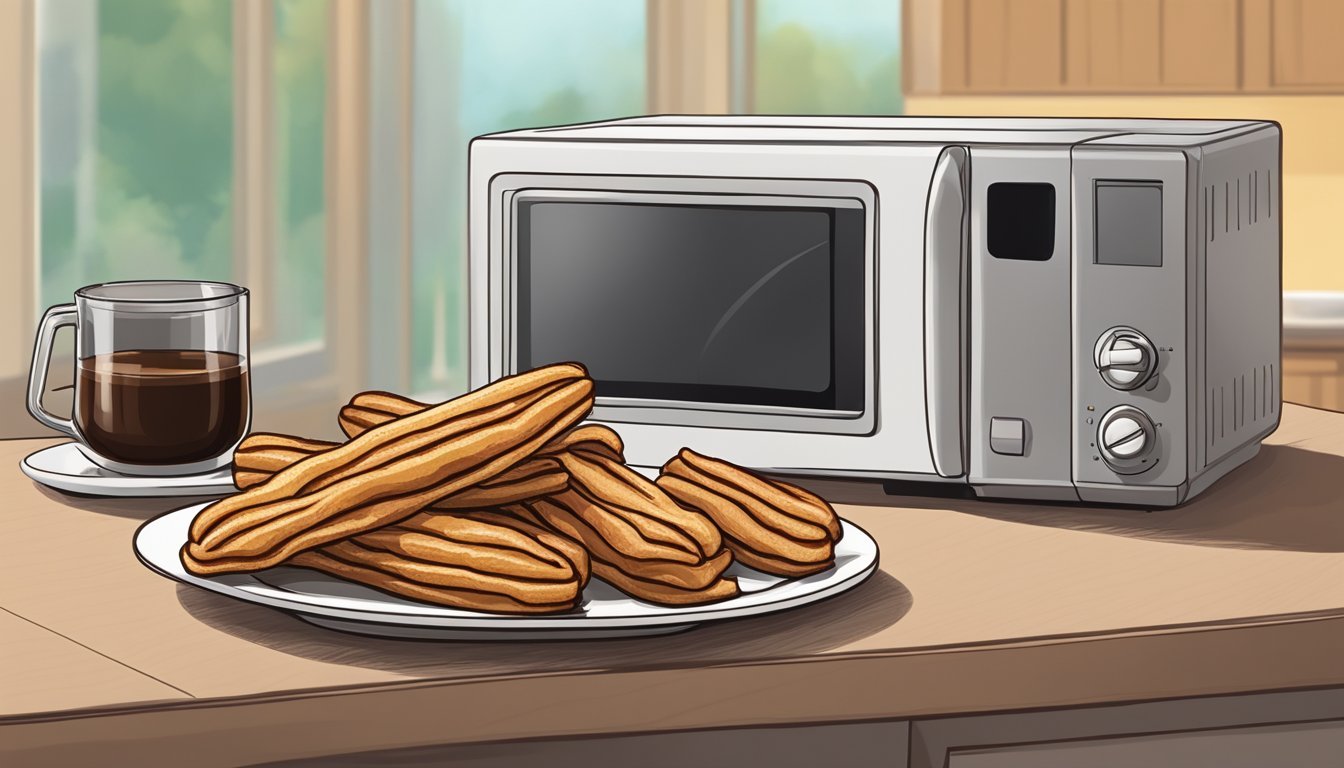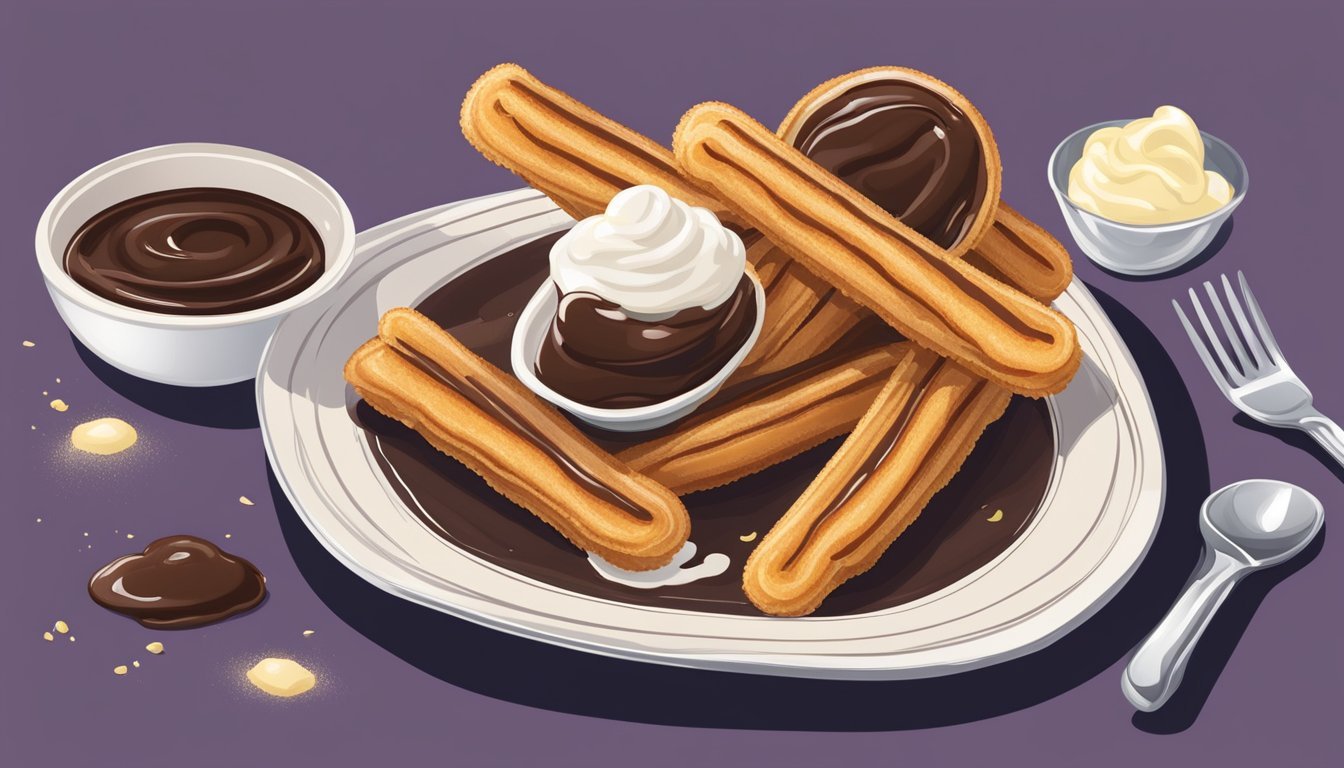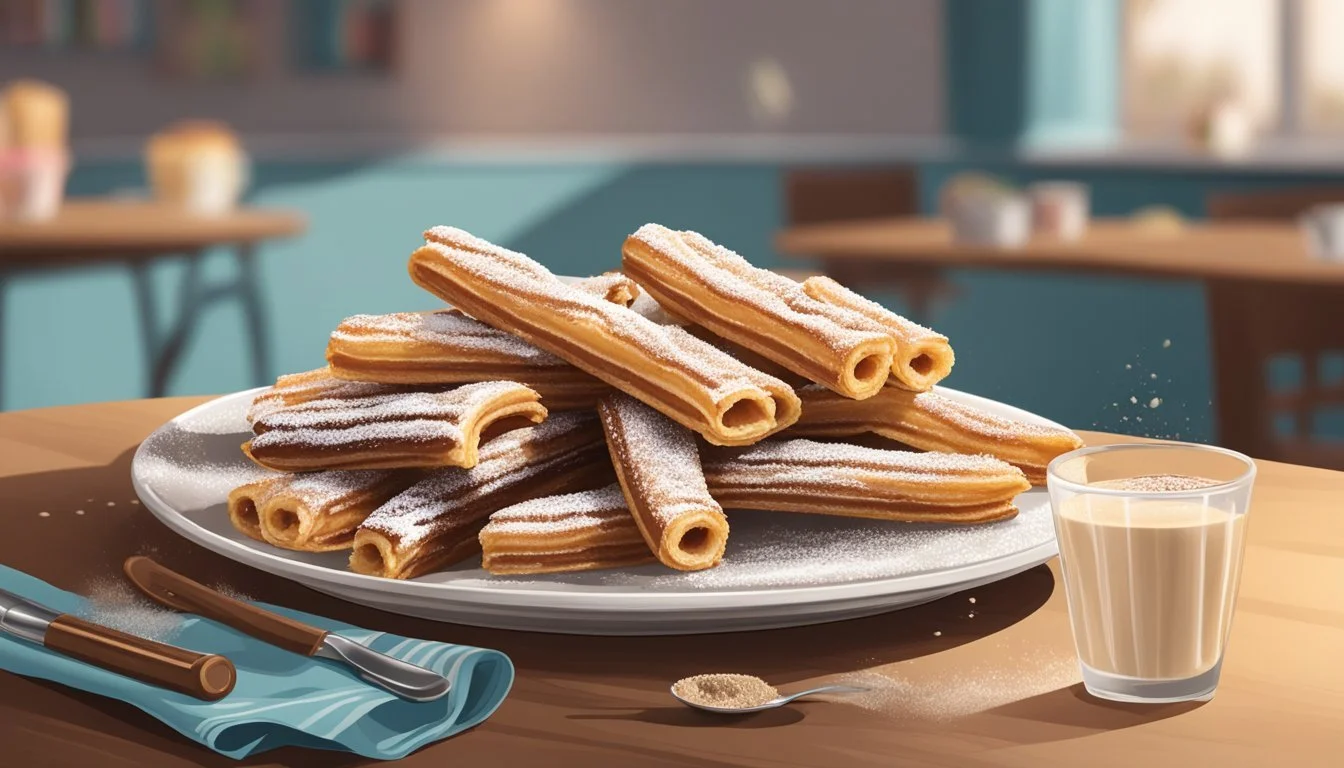How do you eat churros?
Mastering the Art of Enjoying this Sweet Treat
Churros are a traditional Spanish dessert that have won the hearts of people worldwide. Originating from Spain and Portugal, these fried pastries have become synonymous with sweet indulgence. Typically made from a choux-like dough that's piped through a star-shaped nozzle, churros are deep-fried to golden perfection and often coated with a cinnamon and sugar mixture. The crisp exterior, paired with a tender interior, creates a delightful textural contrast that's hard to resist.
Across the globe, churros serve as a versatile treat with a range of accompaniments. While they are traditionally enjoyed for breakfast dipped in hot chocolate or café con leche in their country of origin, modern takes on churros have expanded the ways in which they can be savored. Gourmet variations may incorporate fillings like chocolate, caramel, or fruit preserves, transforming them into a decadent snack or dessert.
Creative adaptations highlight the growing popularity of churros in different cultures, with innovative versions like churro popcorn, which mixes the salty and sweet, or Oreo-flavored churros, offering a unique twist on the classic flavor. Regardless of how they are served, churros are celebrated for their satisfying crunch and sweet simplicity, maintaining their status as a beloved treat around the world.
History and Origin
The cultural tapestry of churros is interwoven with narratives from Spain to Mexico and across Latin America. These fried delights reflect a fusion of traditions and flavors, shaped by centuries of history and culinary exchange.
Spanish Churros
In Spain, churros are a time-honored treat, typically enjoyed for breakfast or as a snack. Historical records suggest that churros may have been introduced by the Moors; they crafted a simple dough called 'teules' that evolved into what Spaniards now relish as churros. It is common to see churros served with a thick, hot chocolate in cafés, especially in Madrid, marking the Spanish love affair with this confection.
Mexican Churros
Mexico's adaptation of churros retains the basic concept but introduces local flavors. In Mexico, churros are often filled with various sweet fillings, such as dulce de leche, chocolate, or fruit jams. They have become a popular street food, demonstrating their wide appeal and the flexibility of the churro to incorporate local culinary preferences.
Latin America Influence
Churros have left their mark across Latin America, where each country has embraced and tailored this snack in unique ways. The sugary, crispy exterior, often sprinkled with a cinnamon and sugar mixture, remains constant. However, the influence of the Portuguese, who may have been inspired by similar techniques from China, can be seen in the distinctive shapes and sizes of churros found throughout Latin American nations.
Basic Ingredients
The essence of churros lies in a handful of basic ingredients that work together to create their unique texture and flavor. Readers should recognize that each ingredient serves a specific purpose, whether it's providing structure, richness, or sweetness to the churros.
Flour Type
All-purpose flour is the foundation for churros, providing the necessary structure and chewiness. Its gluten content is ideal for the dense yet tender texture that defines a classic churro.
Fats and Oils
A variety of fats can be used in the churro dough, with the most common being butter for richness. In the frying process, oils with a high smoke point, such as vegetable oil, canola oil, or any other neutral oil, are preferred to achieve a crispy exterior without imparting additional flavor.
Sweetening Components
Sugar is used both within the dough and for coating the fried churros. Some recipes may call for a dusting of sugar mixed with cinnamon for extra flavor. It's important to use the right amount of sugar in the dough to balance sweetness and texture.
Leavening Agents
While some churro recipes may incorporate eggs as a leavening agent, most rely on water or milk mixed with baking powder. This combination is crucial for the light, airy interior once the churros puff up in the hot oil.
Making Churros
The creation of churros involves a series of steps from dough preparation to frying and cooling. Each step is crucial to achieving the classic texture and taste that defines this popular treat.
Preparing the Dough
The foundation of a churro is its dough, prepared by boiling water with butter, then mixing in whole wheat or all-purpose flour to create a thick paste. Proportions and temperature control are key. One must ensure the water is boiling before adding the butter, and once the flour is incorporated, a dough should form that pulls away from the sides of the pan.
Piping and Cutting
After the dough cools slightly, it is transferred into a piping bag fitted with a large star-shaped nozzle. Careful piping results in the churro's signature ridges. The dough is then piped into long, straight lines or looped into shapes and cut using scissors for uniformity in size.
Frying Technique
Churros are traditionally fried until golden in quality frying oil with a high smoke point, such as olive oil. The oil temperature is pivotal; it should be heated to approximately 350 - 375 degrees Fahrenheit. Constant monitoring is required to maintain this temperature and ensure even cooking.
Draining and Cooling
Post-frying, churros should be placed on paper towels to drain excess oil. This step is vital for texture, as it prevents the churros from becoming overly greasy. Once drained, churros need a brief period to cool slightly, making them safe and pleasant to eat while still delivering the desired crunch on the exterior with a soft interior.
Customizing Churros
Churros, traditionally enjoyed with a dusting of cinnamon and sugar, can be customized to suit a variety of tastes, reflecting one's preference for different flavors and textures.
Flavor Variations
Churros can take on a multitude of flavors, becoming a canvas for one's culinary creativity. For a richer experience, chocolate chips can be incorporated into the dough, melting slightly when fried for a gooey texture. Adding cocoa powder to the batter introduces a deep, chocolatey essence without overpowering the churro's traditional flavor. Experimentation with flavor extracts, like vanilla or almond, can also yield delightful results.
Dipping Sauces
A favorite way to enjoy churros is to pair them with a tempting dipping sauce. Classic chocolate sauce remains a crowd-pleaser, often enhanced when warmed. Dulce de leche, a sweet, caramel-like sauce, adds a luxurious, creamy dip that complements the churro's crispiness. Adventurous palates might explore Nutella or hot fudge for indulgence, or fruit-based sauces for a tart contrast.
Toppings and Coatings
After frying, churros are commonly coated with a cinnamon sugar mix, providing them with their signature sweet and spicy profile. For texture and visual appeal, sprinkles or mini chocolate chips can be sprinkled on while the coating is still sticky. A dusting of ground cinnamon adds an extra layer of flavor for those seeking a spicier bite. Bold palettes might appreciate a drizzle of caramel sauce, creating a balance between sweetness and the savory fried dough.
Serving and Presentation
Serving churros in the most appealing manner enhances their enjoyment, focusing on the right temperature, aesthetics, and portion sizes.
Serving Temperatures
Churros should be served hot and fresh to ensure the exterior is pleasingly crisp, and the ridges retain their shape. The ideal temperature maintains the moisture inside, providing a soft interior. They should be eaten shortly after frying to prevent sogginess.
Plating Techniques
Presentation of churros can range from simple to elaborate. For a traditional experience, churros are laid out without crowding on a ceramic plate or in a paper cone. Ridges are visibly highlighted to emphasize texture, and serving with a side of hot chocolate for dipping is customary. To achieve a pleasing contrast, the chocolate should have a velvety consistency that clings to the ridges when dipped.
Portion Sizes
Portion size may vary depending on the context:
Individual Serving: 3-5 churros.
Shareable Platter: 10-15 churros, depending on the number of diners.
Aligning portions with appetite ensures no loss of texture due to prolonged exposure to air.
Storage and Reheating
When preserving the texture and flavor of churros, proper storage and reheating techniques are essential. This section provides information on how to keep churros fresh and crisp, and the best methods to warm them up while maintaining their quality.
Preserving Freshness
For optimal freshness, one should store cooked churros in an airtight container lined with paper towel to absorb excess oil. Room temperature is ideal for storage as refrigeration may lead to sogginess. Containers should keep churros fresh for approximately 24 hours, although consuming them within this time frame is recommended for the best taste and texture.
Reheating Methods
Effectively reheating churros is crucial for enjoying their signature crunch and warmth. Below are safe reheating methods:
Oven: Preheat to 375°F (190°C). Place churros on a baking sheet and bake for 5-8 minutes.
Microwave: Use for 10-15 seconds. A paper towel wrap might help maintain texture.
Frying: Heat oil to 350°F (180°C). Fry churros for 15-30 seconds, then drain on paper towel.
Air Fryer: Preheat to 350°F and cook for 2-3 minutes in a single layer.
Reheating should always be done just before serving to ensure the churros are enjoyed at their best quality.
Nutritional Information
Churros are a deep-fried treat with a notable caloric density due to their fat and carbohydrate content. This section details the nutritional aspects of churros, focusing on their caloric content and dietary considerations.
Caloric Content
A standard serving of one churro, weighing approximately 26 grams, typically contains between 103 and 116 calories. The caloric distribution in a churro is majorly due to the presence of fats and carbohydrates.
Calories: 103 - 116 kcal per churro (26g)
Fat: Roughly 57% of the calories are from fat.
Carbohydrates: About 41% of the calories are from carbs.
Protein: A minimal 2% of the calories are from protein.
Dietary Considerations
Individuals with specific dietary needs should be aware of the following:
Sugar Content: Churros are coated with sugar, contributing to the carbohydrate content.
Gluten Presence: Being made with flour, churros contain gluten, which is unsuitable for those with celiac disease or gluten intolerance.
Fried Food: Being fried, churros carry the health considerations associated with fried foods (What wine goes well with fried foods?), including higher fat content.
In summary, churros provide energy primarily in the form of fats and sugars, with a modest amount of protein. The treat also contains gluten and is, therefore, not suitable for people with some dietary restrictions.
Social and Cultural Context
Churros have transcended simple culinary status to become significant in various social settings and traditions. They are not just a dessert; their presence is felt in popular culture and traditional celebrations across different societies.
Churros in Popular Culture
Churros have firmly embedded themselves in popular culture, especially through social media platforms like Instagram and Facebook. Photos of this fried dessert often feature aesthetically pleasing setups and are widely shared, showcasing the treat's versatility, whether it's enjoyed for breakfast or as a snack. Influencers and food enthusiasts regularly share dessert recipes of churros, attracting likes and shares, and spreading their popularity even further.
This Mexican dessert has also been incorporated into numerous movies, television shows, and books, where they are often associated with warmth, indulgence, and family traditions. The cultural impact of churros is such that their shape and texture are instantly recognizable, making them a symbol of comfort food around the world.
Traditional Events and Celebrations
Churros hold a special place in traditional events and celebrations. They are a staple in various Hispanic communities and are often linked with festivities and communal gatherings. During national holidays, fairs, and religious fiestas, it is common to find churros being served hot and fresh alongside a cup of thick, hot chocolate. This pairing is not just a favored combination but a deep-rooted tradition, particularly in Spain.
In addition to their significance in Spanish culture, churros are also essential to Mexican cultural events, such as Dia de los Muertos and Cinco de Mayo, where they are a popular treat. The act of sharing churros during these celebrations fosters a sense of community and continuity of heritage, highlighting the dessert's role in maintaining cultural identity through food.
Churros Beyond the Basics
Exploring the world of churros reveals that chefs and home cooks alike are elevating the simple choux pastry into innovative and gourmet experiences.
Modern Twists on the Classic
Churros have transcended their traditional recipe, evolving from a plain choux pastry dough into a canvas for creativity. Homemade churros are now also being infused with new flavors, such as the introduction of Oreo flavoring, offering a different take on the classic cinnamon and sugar coating. Additionally, incorporating the concept of sweet and savory, churro popcorn emerges as an ingenious snack, combining the familiar texture of churros with a contrasting taste profile.
Examples of Modern Twists:
Churro Popcorn
Oreo Flavored Churros
These variations maintain the essential qualities of the authentic churros recipe while adding a novel twist that surprises the palate.
Churros in Haute Cuisine
In haute cuisine, churros have found a place as both a sophisticated dessert and a component in complex dishes. Chefs are deconstructing and reimagining the pastry dough to complement a variety of ingredients. This experimentation includes using miniature churros as an accompaniment to gourmet ice creams or integrating them into plated desserts that engage all senses.
Haute Cuisine Inspirations:
Churro Accents for Plated Desserts
Miniature Churros with Gourmet Ice Cream
These refined interpretations of churros showcase their versatility beyond the street food realm, allowing for both a homemade touch and a high-end culinary treat.
Troubleshooting and Tips
In this section, one will find practical solutions to common issues faced when preparing churros and expert tips to perfect the art of making this delightful treat.
Common Issues
Uneven Cooking: If the churros are not cooking evenly, the issue could be with the frying oil temperature. Churros require oil that is consistently between 350 and 375 degrees Fahrenheit. A deep fryer or a cooking thermometer can help maintain the correct temperature.
Soggy Churros: Sogginess indicates that the oil wasn't hot enough. Ensuring the oil is at the right temperature before frying is crucial. Use a Dutch oven for better heat retention if a deep fryer is not available.
Churros Sticking Together: To prevent this, one may need to reduce the number of churros added to the oil at one time. After piping them into the oil using a piping bag, they should be spaced apart and moved around gently with a wooden skewer.
Dough Consistency: If the dough is too tough or too liquid, it could be that the measurements of the ingredients are off. Measuring ingredients precisely is key. Use an electric mixer to ensure a smooth, consistent dough.
Expert Tips
Piping Bag Tips: For the classic churro shape, use a piping bag fitted with a large star tip. Fill the bag and pipe the churros directly into the hot oil, cutting them to size with scissors.
Oiling the Piping Bag: Lightly coating the inside of the piping bag with oil can help the dough slide out more easily.
Testing Oil Temperature: If one doesn't have a thermometer, they can test the oil temperature by dropping a small piece of dough into it. If it bubbles and rises to the surface, the oil is ready for frying.
Dutch Oven Advantages: A Dutch oven retains heat well and can help maintain a steady frying temperature. This is preferable over a standard pot when frying churros.
Oven Method: While frying is traditional, churros can also be baked in an oven preheated to 425 degrees Fahrenheit as an alternative, though they won't have the same crispiness as the fried version.
Resting the Dough: Let the dough rest for a few minutes before piping. This helps the gluten relax and can result in a better texture.
Cooking in Batches: To manage the frying process and ensure consistent cooking, cook churros in small batches. This prevents the oil temperature from dropping and churros from becoming greasy.
Draining Excess Oil: After the churros are fried to a golden brown, transferring them to a plate lined with paper towels will help to drain any excess oil and keep them crisp.
By adhering to these troubleshooting points and expert tips, they can make churro eating an enjoyable experience with optimum results.
Related Desserts and Alternatives
In exploring the world of churros, it's fascinating to see how this beloved treat has inspired a variety of desserts and given rise to alternatives that speak to different tastes and textures.
Similar Fried Pastries
Doughnuts: A common fried pastry with a similar base of flour, sugar, and eggs, doughnuts are often glazed or sugar-coated and can come with various fillings and toppings.
Porras: These are often thicker and softer than traditional Spanish churros; they originate from Spain and provide a slightly different texture and taste experience.
Churro-inspired Dishes
Churro Milkshake: An innovative spin on the classic, incorporating vanilla ice cream, milk, and churros, blended to create a creamy dessert.
Churro Tacos: Utilizing churros as the taco shell, these are filled with various sweet ingredients, combining the crunchy exterior with a soft, flavorful center.
When it comes to churros, both Mexican churros, known for their star-shaped cross-section and traditionally coated in cinnamon sugar, and Spanish churros, typically straighter and less sweet to allow for dipping in hot chocolate, continue to influence an array of related desserts and alternatives. Churrerías, specialized shops in making churros, are also a testament to the popularity and adaptability of this pastry.
Conclusion
Churros have secured their status as a beloved dessert savored across the globe. The enjoyment of these golden, crispy delights typically involves a dusting of cinnamon sugar, creating an irresistible balance of sweetness and spice.
One of the quintessential experiences with churros is pairing them with dipping sauces. The choice of sauce can be simple or elaborate, depending on personal preference:
Chocolate: Thick and rich, often the preferred companion in Spain, enhancing the churros with its velvety texture.
Dulce de leche: A caramel-like sauce offering a creamy contrast to the crunch of the churro.
Café: Less common, yet a robust option for those who appreciate the interplay of coffee's bitterness with the sweet pastry.
When enjoying churros, freshness is key. They are at their peak when consumed warm and fresh, allowing the exterior's crispness to give way to a tender interior with each bite. For extended enjoyment, proper storage is essential to maintain their quality. Wrapping them in a napkin inside a tight container can help preserve their desired texture for a short period.
In summary, churros provide a flexible and gratifying dessert experience that can be tailored to an individual's taste. Whether they are enjoyed plain, coated in cinnamon sugar, or taken to new heights with sumptuous dips, churros are a dessert that continues to captivate the palates of people everywhere.











